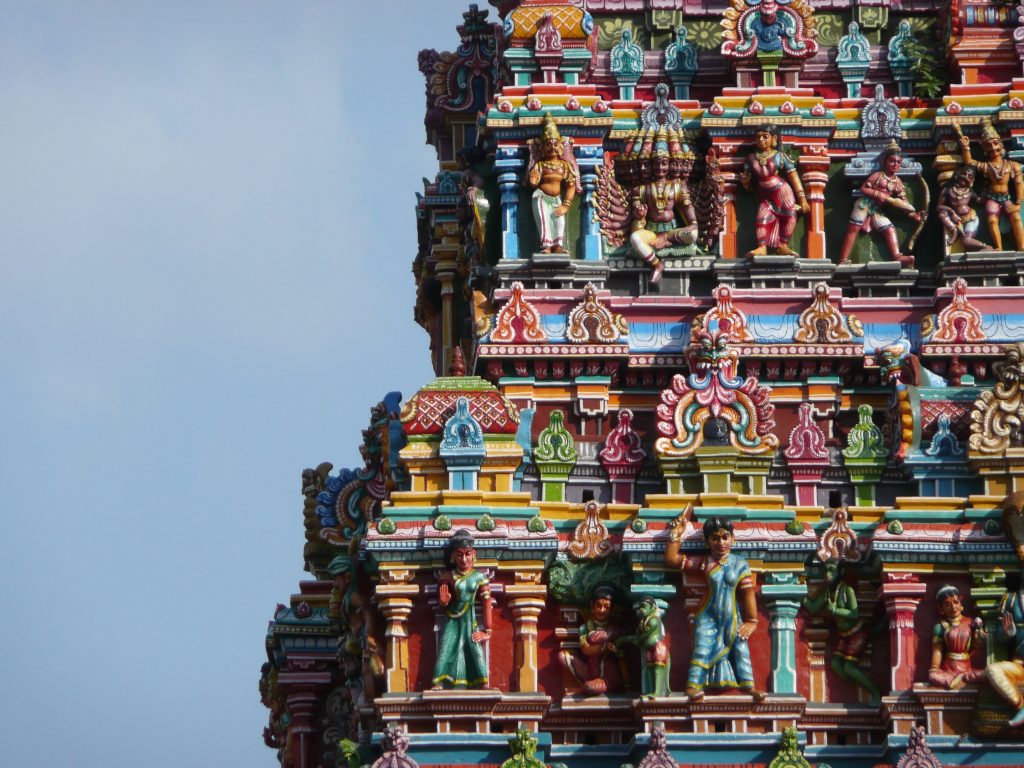
INDIAN JOURNEY
Thirty years ago I spent nine weeks in India, most of the time at the Tamilnadu Theological Seminary in Madurai. It was an incredibly learning experience. I was in the middle of my ordination training and went with one particular question in my mind: what might Christianity look like if it was embedded in an Indian culture as opposed to the European culture we take for granted? I visited temples and ashrams and had lots to think about and read two books which I took with me, the Penguin editions of the Upanishads and the Bhagavad Gita (Song of God, or rather, of God the Song)
HINDUISM

I concluded that Hinduism goes from the sublime to the ridiculous. A fellow-member of HTB (Holy Trinity Brompton), James Behrens, was a judge in Leicester in the 1990s. Because Leicester has so many Muslims and Hindus, magistrates were asked to visit a mosque and a temple. In the Hindu temple James encountered the more ridiculous end of the spectrum, a series of china dolls dressed up to represent various gods and goddesses. The sublime end comes in the spiritual reflections in the Upanishads and the teaching of the Bhagavad Gita (Song of God), namely that love of God is the supreme way. The hymn ‘Amazing Grace’ could easily be an Indian ‘Bhakti’ or ‘love’ song without changing a word.
RIG VEDAS
One evening recently I was reading the introduction to the Bhagavad Gita, as one does, when I cam across a passage from the Rig Vedas, which I had always ignored. The Rig Vedas are the oldest Indian scriptures, with a completely different cast of gods from the ones worshipped today. It is a collection of hymns, dating from roughly the time of the Exodus in the Bible. I was bowled over by it! Here is an extract:

These words of glory to the God who is light shall be words supreme amongst things that are great. I glorify Varuna* almighty, the God who is loving towards him who adores.
We praise thee with our thoughts, O God. We praise thee even as the sun praises thee in the morning: may we find joy in being thy servants.
Keep us under thy protection. Forgive our sins and give us thy love.
* Varuna was the God associated with the seas, the sky, justice and truth.
Hitherto I had had no interest in or curiosity about the Rig Vedas. What I discovered that evening was the depths of my ignorance. I hope I have learnt never to simply dismiss something I know nothing about.
THE GITA AT CHRISTMAS
At church services at Christmas we always have some readings from the Jewish scriptures , such as Isaiah 9.2,6,7, or 11.1-9. These were written 700 years before Jesus was born. If we read them and see them as pointing towards Christ, can we do the same for other scriptures? I am thinking particularly of the Bhagavad Gita 4.6-9:

Although I am unborn, everlasting, and I am the Lord of all, I come to my realm of nature and through my wondrous power I am born. When righteousness is weak and faints, and unrighteousness exults in pride, then my Spirit arises on earth.
For the salvation of those who are good, for the destruction of evil in men, for the fulfilment of the kingdom of righteousness, I come to this world in the ages that pass.
He who knows my birth as God and who knows my sacrifice, when he leaves his mortal body, goes no more from death to death, for he in truth comes to me.
What do you think? Email me your comments.
And please share this with anyone you think might be interested.
